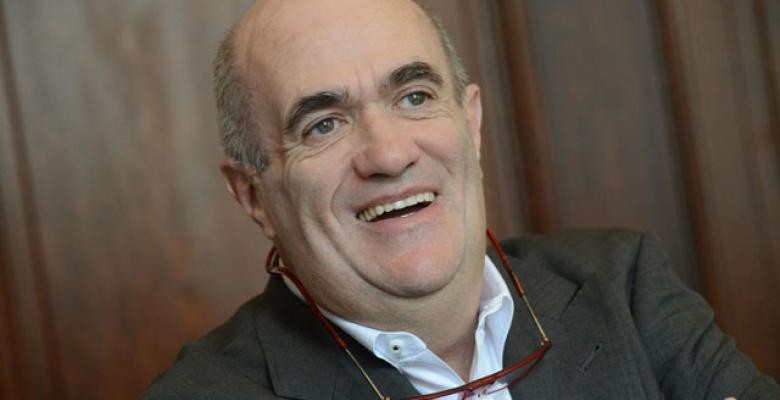Colm Tóibín’s New Novel, "Nora Webster," Debuts in October

A new book by Colm Tóibín, the Irene and Sidney B. Silverman Professor of the Humanities, is always a much-anticipated event. An award-winning author of such critically acclaimed bestsellers as The Testament of Mary and Brooklyn, his latest work, the novel Nora Webster, portrays a middle-aged, strong-willed mother of four as she navigates life in a small Irish town after the death of her beloved husband. As New York Times columnist Maureen Dowd noted in a column admiring Tóibín’s decision to imagine the inner life of Mary, mother of Jesus, after the crucifixion, “Colm Tóibín has plenty of experience getting inside women’s heads.”
Q: Over time, you have moved more toward works that focus on women. How would you characterize this thread in your work and the reasons behind it?
The past three novels, Brooklyn, The Testament of Mary and Nora Webster, have dealt with the lives of women, but many of the short stories in Mothers and Sons and The Empty Family have been about men. Also, some of the new short stories I have been working on, plus the novel I am now trying to write, are about men. I wish I could tell you I had a plan, or I saw a pattern, or I knew why some novels are about gay characters, others about women, and so on. All I know is that nothing can start unless an idea, a memory, an image, or something I have heard moves into rhythm almost of its own accord. So when that happens, I can work.
Q: In addition to other themes that have been noted in your books—home and being away from home, self-identity, creativity—there is an overarching one of giving a voice to the voiceless, to marginalized characters, members of minorities. Do you agree with that description?
I see the characters as oddly powerful, at least to me, despite their powerlessness. Or at least as ambiguous—ambiguous enough to interest me. But I see them in very particular ways, rather than as members of minorities or marginalized. I think that would be a good subject for a sociologist or a politician, but not a novelist.
Q: New York magazine described Nora Webster as a partial sequel to Brooklyn. Is that true? Are any of the same characters in both books?
Nora Webster is set in the town that the protagonist in Brooklyn leaves. They are both from the same generation. And yes, some of the characters in the earlier novel have walk-on parts in Nora Webster.
Q: What courses will you be teaching at Columbia in spring 2015? What distinguishes this University from others where you’ve taught?
I am teaching a course on Irish prose, which will include Joyce and Beckett, and also a course on the development of the heroine in the 19th century novel, which will include Jane Austen, George Eliot, Henry James and Edith Wharton. Columbia, for me, is a place dedicated to learning. There is an ethos at the University, which I think makes its way into the classroom and into every area of the students' lives, and this ethos is deeply serious about study and reading, and about thinking and being intelligent. It is remarkable how this ethos has survived. I feel inspired by it.
Q: How does the intersection of teaching and writing affect you? Does one part of your life bleed into the other, or do you keep the two spheres totally separate?
Teaching sharpens me. Working with students who are dedicated makes me want to write better books and work harder. I come away from each class caring about the books we have been reading, knowing more about the machinery of fiction, and this has to make a difference to the work I do as a writer.
Nora Webster Reviews
Finding a Voice, The New York Times, October 2
Colm Tóibín’s powerful study of widowhood, The Guardian, October 4